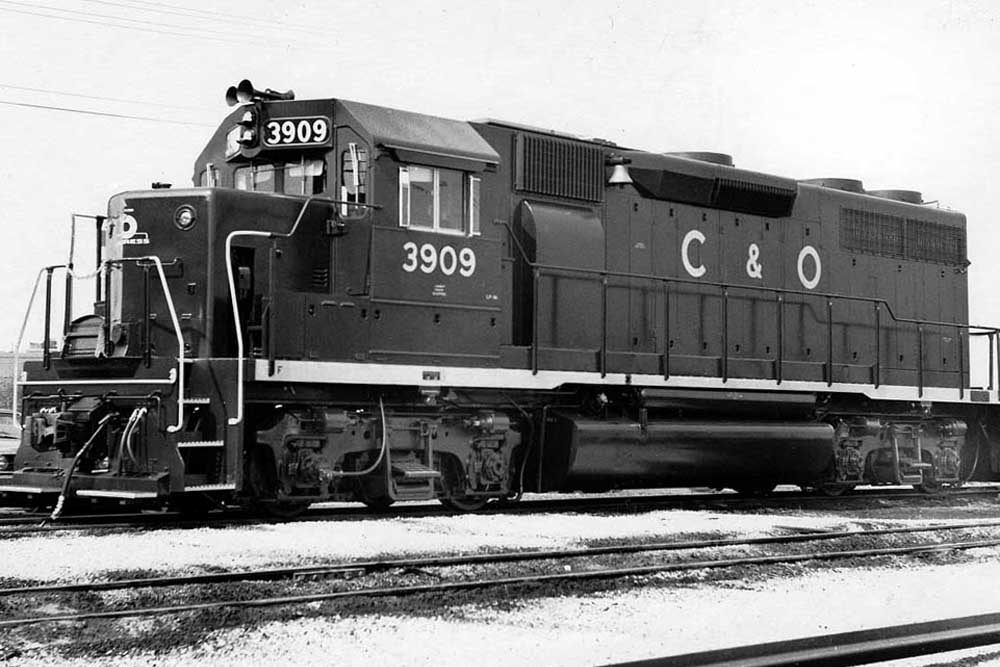The Electro-Motive Division GP39 diesel locomotive was a 12-cylinder, turbocharged unit without a market.

EMD rarely missed when the company introduced a new model, but the announcement of the GP39 turned out to be a sales dud. The few buyers who did take the plunge and roster the locomotive found that, in the right assignment, it was a very good product with nothing seriously wrong with it. For the shop forces that knew about the care and feeding of turbochargers, they turned out to be a good design. But in the late 1960s, most potential customers just weren’t interested.
Twenty-three four-axle EMD GP39s rolled out of EMD’s La Grange (Ill.) factory between June 1969 and July 1970, sporting the builder’s reliable 645E3 V12 prime mover producing 2,300 hp. Basically it was an offshoot of the popular 2,000 hp, 16-cylinder GP38 but equipped with 12-cylinder engine and a turbocharger.
Original owners included one for Atlanta & St. Andrews Bay Railroad, two for Kennecott Copper, and the largest order, 20 units, for Chesapeake & Ohio. The A&SB unit eventually wound up on the Paducah & Louisville, and the KCC pair moved over to Copper Basin Railway. The C&O units led a productive life and eventually were absorbed intact to CSX Transportation.
Since there always seemed to be an exception to everything, at the tail end of production two GP39s were built as GP39DCs using a D.C. main generator instead of the standard alternator. Both were specially built for Kennecott Copper Co.
Undeterred by the poor sales, EMD’s engineers kept the concept alive, later creating the almost lookalike, and very popular, GP38. The builder was not done with the idea of turbocharging the design, later coming out with the GP39-2 in the mid-1970s, which sold to many railroads.
As a side note, the GP39 classification was used by Burlington Northern to signify a group of their rebuilt EMD GP30s and GP35s. Consider them non-EMD GP39s.














You also forgot about the Southern with the GP39X which produced 6 units (4600-4606) later to be come GP49X under NS
The article also says the GP39 was built from June 1960 to July 1970. I don’t think so. June 1969 is more likely the start of the production period. This article is not the best written material I’ve seen come from Kalmbach.
Wait! At one point in this article, the GP39 was “an offshoot of the popular GP38”. Later in the same article, “… EMD’s engineers … later creating the almost lookalike, and very popular, GP38.”
I’m no aficionado of Diesel development but maybe the second “GP38” ought to be “GP40”?
I can testify that the GP40 was extremely popular. They were first line motive power on the NYC when I hired out in ’67 and headed all of the SVs and other high priority freights. Incidentally, the Central’s GP40s did not have dynamic brakes; The Water Level Route “didn’t need no steenking dynamic brakes”.